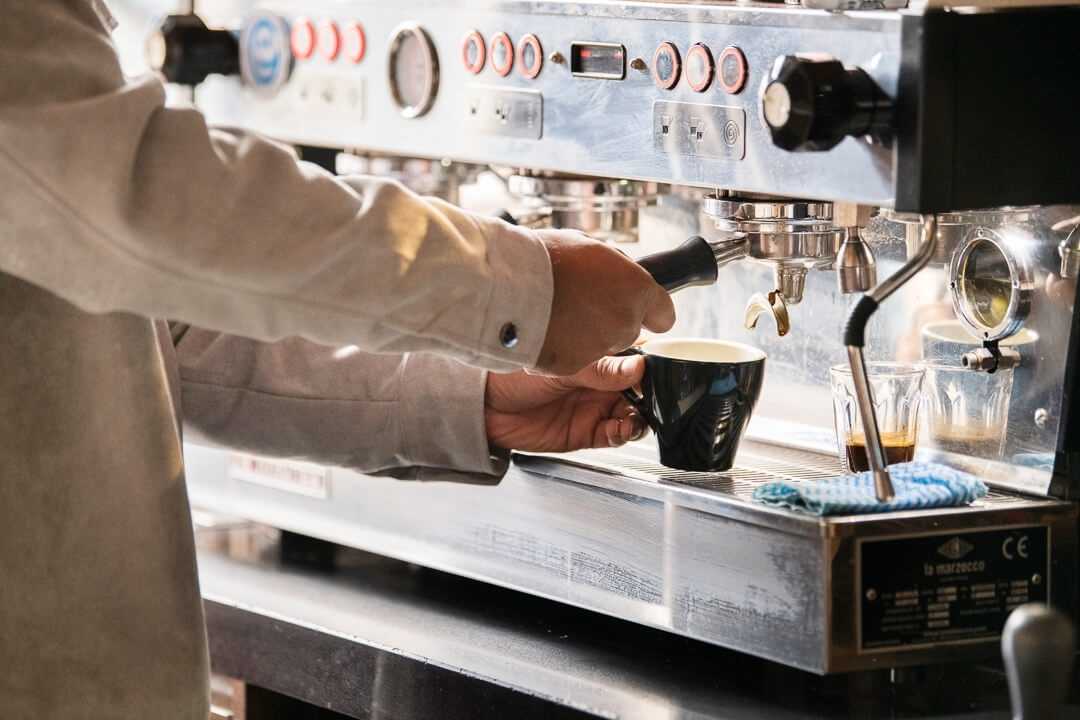Whether you own a home-style family diner or an upscale city restaurant, starting in-house delivery can help you attract new diners. In the world of convenience, customers are accustomed to buying products or services quickly, from the comfort of their own homes. A restaurant food delivery service allows more people to taste your cuisine.
During the Covid-19 pandemic, restaurants were required to pivot to a food delivery business model. Many have kept their food delivery services to increase marketing reach, customer experience and profitability. It can be a smart strategy to scale your restaurant business whilst retaining control of your full dining experience.
6 Steps to start food delivery in-house
1. Amend your business plan for in-house delivery
Setting up the infrastructure for restaurant in-house delivery services requires investment and planning. Any changes to your business structure should be mapped out in your business plan, regardless of how established your restaurant is.
Create a winning restaurant business plan for your online food delivery service:
- Executive summary: This should describe the restaurant concept, points of difference and return on investment (ROI) for both your restaurant and food delivery elements.
- Mission statement: The purpose of why your restaurant exists. Revisit this to ensure it also encompasses your food delivery.
- Company description: Add the long and short-term goals for the delivery operations and describe your target market research.
- Ideal diner experience: Even if a diner is not sitting in your restaurant, it is still beneficial to describe the perfect experience you would like them to have with your delivery service. Include time goals, packaging and cuisine standards.
- Sample menu: Revisit your menu to ensure it is transferable to a delivery service and consider offering a separate food delivery menu.
- Location analysis: One of the most important elements to start a food delivery service is analysing your delivery routes and greatest reach.
- Employees: Add delivery drivers and any extra customer service or kitchen staff to your employee structure.
- Marketing strategy: Every profitable business requires a tailored marketing approach, including your in-house delivery.
- Financial projections: With high start-up costs, planning for profit margins and ensuring your business will thrive is essential.
How to calculate in-house delivery costs
Determining the expenses goes beyond simply considering the fees associated with delivery drivers. There are substantial startup costs and ongoing overheads to take into consideration:
- Legal Agreements - Check the regulations for operating a food delivery business in your region and seek legal advice for your entity, supplier contracts and terms of sale.
- Insurance - A necessary expense for any food delivery business is insurance for drivers and general liability insurance.
- Location costs - Look at your restaurant floor plan and ensure the kitchen space is set up for takeaway orders and pick-ups.
- Inventory - Calculate the ongoing costs involved for necessary stock, such as containers and ingredients.
- Technology - It is essential to have an online ordering system in the digital age to maximise your reach. Calculate the set-up costs, monthly running costs and POS integration prices.
- Vehicles - Calculate the value of buying versus leasing delivery vehicles.
- Staff - Estimate the expenses involved in both recruiting and retaining new employees for your food delivery business.
- Contingency fund - It is always wise to keep a separate fund for any unexpected costs or emergencies.
Charging delivery fees
Once there is a clear financial investment projection, it will help an informed decision on delivery fees. Decide on your self-delivery coverage and plan the most efficient routes for your drivers to ensure it is cost-effective.
Your final decision will vary depending on whether you want to change a fixed price flat fee or charge per-mile delivery so you can extend your reach. Ensure all of your delivery fees match the competitor's average, and cover your expenses for the delivery driver and petrol.
2. Invest in technology
The primary advantage of an in-house delivery service is the absolute control it grants over your operations and the customer experience. A technology platform allows you to personalise the delivery process for your brand and customers, rather than reconciling with a third-party app with many other restaurants.
It would be beneficial to choose an online ordering system that automatically feeds into your restaurant technology such as table management, POS system and inventory. Consolidating your
operations into a seamless system will streamline your processes, and communication between departments and reduce the resources needed on staff.
ResDiary reservation software allows you to integrate an online ordering widget that can be controlled from one platform. Make real-time changes, personalise your customer experience and take payments from one centralised program.
Additionally, Operating your own online ordering system can prove to be more financially advantageous over the long run. As you are not subject to paying commissions to third-party delivery platforms, 100% of the profits are for you.
3. Purchase delivery vehicles
A vehicle fleet is a pivotal decision in bringing your delivery service in-house. A well-maintained fleet can reduce operational costs, and enhance delivery speed and overall customer satisfaction. Considerations should include:
- Lease versus buying your own vehicles
- Vehicle types, such as vans, bikes and cars
- Fuel. Consider electric, hybrid or standard transmission
- Branding. A top benefit of running your own fleet is the ability to market your restaurant on your vehicles.
With any investment, it is crucial to weigh the initial capital, ongoing maintenance, insurance and expenses against your profitability. Successful restaurants will adapt their fleet size to meet customer demand and ensure a balance in ongoing costs.
4. Decide on your menu
Your complete restaurant menu may not be suitable for food delivery, or you may want to explore the idea of offering a more concise takeaway menu. For instance, a 7 course digestation menu may not be suitable for home delivery and could impact the overall experience a customer has with your cuisine. Choosing one of these courses to be a main menu choice, for home delivery, could allow you to perfect one dish and entice them to dine with you for the full 7 courses. It is advantageous to consult with your chefs to create a delicious menu that will retain its presentation and flavour integrity when delivered.
It may also be essential to impose a minimum order value to ensure delivery orders are worth the costs and effort involved. Using an online system like ResDiary allows you to continually monitor your effective processes and make immediate changes to your menu and terms.
5. Stock up for a food delivery service
The packaging for food delivery is essential for a restaurant's success. Containers will need to travel well and retain the heat and presentation of your dishes. It is worth investing in quality stock to ensure customer satisfaction. Key considerations include:
- Heat proof containers
- Condiment pots
- Drink takeaway cups
- Recyclability - Ensure your package choices align with your brand values and goals.
- Branding - decide if it is worth investing in branded stock to maximise marketing opportunities
- Coolers or thermal delivery bags
6. Hire and train delivery drivers
When relying on third-party delivery services, you become tied to the terms, values, and standards of another company. In contrast, by managing your own delivery drivers, you have the freedom to select your delivery drivers and guarantee that their service aligns with your exceptional in-house customer experience.
Your interview questions and training should cover route knowledge, speed and customer service expectations.
Benefits to in-house delivery for restaurants
In today's competitive dining landscape, it is necessary to stand out in the crowd. A shift to bringing the delivery service in-house unlocks numerous advantages for a restaurant to enhance their experience.
1. In-house delivery gives you more control
From the moment a customer looks at your menu to accepting their food from the delivery driver; you will have complete control over the dining experience and the impression they will have of your business. This level of control is not possible with a third-party delivery service as you are reliant on their app, service wait times and customer service levels.
2. Reduce wait times with in-house delivery drivers
Your delivery drivers are solely concentrated on your venue and service. As soon as your food is ready, it can be delivered directly to the customer. In contrast, a third-party delivery service may include wait times for a driver to pick up your food and multiple orders going at once, resulting in a long wait time and potentially cold orders.
3. In-house delivery helps restaurants retain profits
The fees and commissions involved in third-party delivery companies can take away from a restaurant's profits. Some are forced to increase their prices to the customer and risk them looking for a cheaper alternative. With in-house delivery, a restaurant can remain affordable and retain 100% of its profits.
4. Make real-time changes to your in-house delivery service
Delivery management software is controlled by the restaurant and allows full control over changes to the menu, prices, availability and terms.
5. Access to customer data
Third-party delivery companies may have a fine print term that allows them to retain your customer data. By investing in in-house delivery management software, you own your customer data, can use it for marketing purposes and analyse your trends.
6. Control your branding with in-house delivery
Third-party services are branded with their logo and website and market to your customers on every delivery. With in-house delivery, a restaurant can take control of its own branding and increase awareness with every delivery route.
Dish out a marketing strategy for in-house delivery
Having complete control over your in-house delivery offering also comes with the responsibility for marketing. The benefit of this is that you can include it within your restaurant marketing efforts for a full holistic brand approach. Our key strategies to a winning marketing strategy to start a food delivery service include:
- Increase website traffic: Think of your website as your shop front. Most customers will search a restaurant, its menu and reviews before deciding to dine. Follow our killer 13 tips to increase website traffic and ensure your delivery service can be found on Google.
- Build a social media presence: With more and more people using social media as a search platform, there has never been a more advantageous time for restaurants to be sharing their content. Social media marketing for hospitality is unique but can help restaurants to drive awareness and turn users into customers. ResDiary's Meta integration allows you to take bookings or advertise your online menu right from your profile.
- Offer daily specials: Take control of your real-time online system and offer daily specials to make your delivery menu exciting. Most customers like to feel like there is extra effort involved in a service and it would encourage them to check your menu regularly for specials.
- Provide free delivery incentives: Such as, "spend $40 for free delivery" or "share on social media for free delivery". This approach enhances customer satisfaction and shows your gratitude for their custom.
- Brand-up your stock: From delivery vehicles to packaging, you can print your branding everywhere to ensure consistency.
The 'takeaway' on in-house delivery for restaurants
Embracing the advantages of in-house delivery is a strategic move for restaurants seeking greater control, potential increased profitability and enhanced customer gratification. By managing the entire process from online menu to delivery, restaurants can ensure high standards and brand values are upheld.
ResDiary's robust reservation and delivery management software can elevate a restaurant's in-house delivery venture. The platform empowers restaurants to take control of their brand experience by seamlessly integrating with restaurant websites and streamlining processes between departments. Bringing your delivery service in-house with ResDiary's food delivery platform is a recipe for success.
.jpg)

